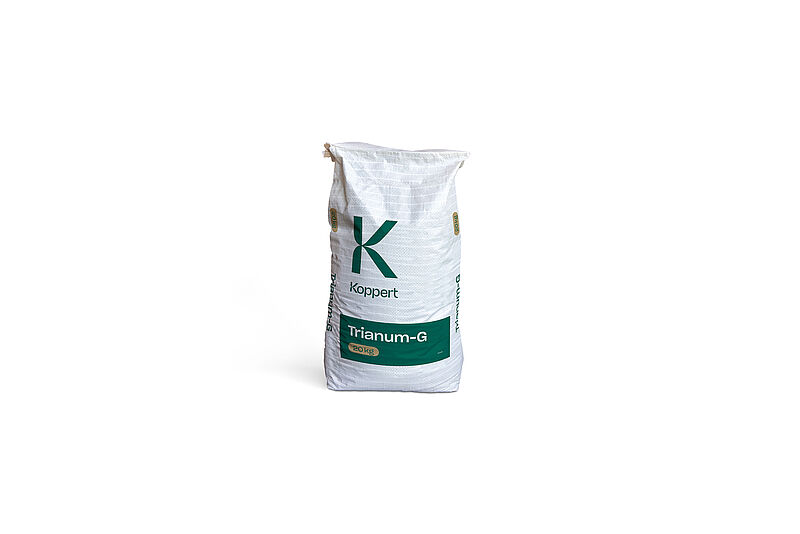Much is known about the protective properties of Trianum against soil-borne pathogens, nevertheless this biofungicide continues to exceed expectations. Even at temperatures of 30 degrees Celsius, Trianum proved very effective at controlling disease and promoting plant growth. The tolerance of Trianum to abiotic stresses such as heat is good news in a world where harsh growing conditions are becoming increasingly common.
Trianum is a brilliant example of finding solutions in nature; of utilising the beneficial properties of micro-organisms, natural enemies and beneficial insects to control pests and diseases. In the case of Trianum, that requires a deep understanding of Trichoderma harzianum T22 as a product, how it interacts with fungal pathogens in the soil, how it protects roots and promotes crop health and development, and how it responds to different conditions. Years of laboratory research and field testing has resulted in a product that is now used effectively around the world to control soil-borne diseases caused by the pathogens Pythium, Rhizoctonia, Fusarium and Sclerotinia. Now, we are continuing to expand our understanding of this versatile fungus to help growers produce crops more sustainably.

Modes of action
Growers have been using Trianum for years in the cultivation of vegetables, soft fruits and ornamentals, as well as in open field crops like onion, carrot and potato. Trianum can prevent and control soil-borne diseases in a number of ways. In the soil, Trianum actively competes with and outcompetes harmful pathogens for food and space. As it grows, it creates a barrier around the roots of the plant, a natural shield against soil-borne diseases. It also actively attacks fungal pathogens by breaking down and ‘feeding’ on their cell walls. Finally, Trianum's positive effect on water and nutrient uptake promotes plant growth and uniformity, keeping the plant healthy and strong.
Highly resilient
The potential for Trianum to contribute to sustainable agriculture and to improve crop health, resilience and yield is enormous. That potential challenges us to understand Trianum even better. Generally speaking, Trichoderma harzianum is known to be an adaptable and resilient fungus. But for growers, it is essential to know exactly how suitable Trianum is for use in a broad range of environmental conditions.
As Trianum is approved for use in many different crops, the time of year that Trianum is introduced to the soil varies greatly. We know that the temperature can greatly affect the performance of biocontrol products. And as temperatures keep rising as a result of climate change, it is extremely valuable to understand how Trianum performs in warm conditions. “Our research has shown that Trianum stays very effective at high temperatures,” explains Olga Kostenko, researcher at Koppert. “In both cucumber and tomato, Trianum proved effective at controlling soil-borne diseases in temperatures of 30 degrees Celsius. The product’s tolerance to heat also makes it a suitable tool for promoting plant growth and uniformity throughout the summer. This was confirmed by field trials in open field crops and orchards in Southern Europe.”
Powerful and versatile biocontrol agent
At present, Trianum is registered for the control of soil-borne diseases and available in two formulations: Trianum-P, granules that are mixed with water, and Trianum-G, granules that are mixed with substrate and can be applied using standard machinery, which is particularly important for the use of Trianum in row crops.
“The more we study Trichoderma harzianum, the more we discover about its potential,” explains Francisco Marin Andres, researcher in the Agronomical Development department at Koppert Spain. “Recently, we proved that Trianum is able to establish itself and grow in five different types of substrate used in greenhouse cultivation, including substrates in which some biocontrol products cannot establish itself or grow. The potential of Trianum to grow not only in diverse soils but also in very artificial and nutrient-depleted substrates presents opportunities for a much larger group of growers.”

Expanding solutions, building confidence
Research and development are major drivers of the movement towards more sustainable agriculture. The growing body of scientific knowledge on Trichoderma harzianum and other biological alternatives to conventional crop protection products is resulting in new solutions that help boost yields and crop quality. Equally important, research is boosting growers’ confidence in the power of nature to improve crop health, resilience and yield.